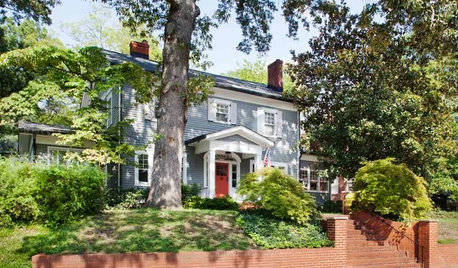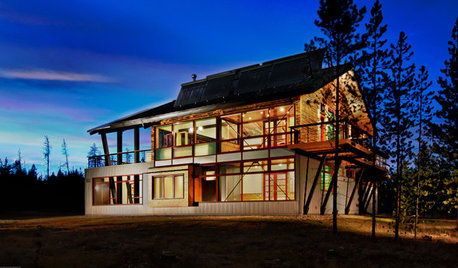Furnace - odd electrical current behavior
DavidR
11 years ago
Related Stories

EXTERIORSWhere Front Yards Collide: Property Lines in Pictures
Some could be twins; others channel the Odd Couple. You may never look at property boundaries the same way again
Full Story
ARCHITECTUREModern or Contemporary Architecture? The Interiors Edition
See how one expert distinguishes between two popular camps of interior architecture. Do you agree with his choices?
Full Story
HOUZZ TOURSHouzz Tour: Whole-House Remodeling Suits a Historic Colonial
Extensive renovations, including additions, update a 1918 Georgia home for modern life while respecting its history
Full Story
FLOORSFloors Warm Up to Radiant Heat
Toasty toes and money saved are just two benefits of radiant heat under your concrete, wood or tile floors
Full Story
GREEN BUILDINGZero Net Energy: A Hardworking-House Term to Know
Homes that consume only as much energy as they produce by renewable means are a goal for builders. Learn what ZNE means for you
Full Story
HOUZZ TOURSHouzz Tour: A Modern Addition Joins a Historic California Home
Two design pros give their century-old home extra breathing room while boosting its energy efficiency
Full Story
REMODELING GUIDESGet What You Need From the House You Have
6 ways to rethink your house and get that extra living space you need now
Full Story
CONTRACTOR TIPSBuilding Permits: When a Permit Is Required and When It's Not
In this article, the first in a series exploring permit processes and requirements, learn why and when you might need one
Full Story
GREEN BUILDINGOff the Grid: Ready to Pull the Plug on City Power?
What to consider if you want to stop relying on public utilities — or just have a more energy-efficient home
Full Story
CONTRACTOR TIPSBuilding Permits: What to Know About Green Building and Energy Codes
In Part 4 of our series examining the residential permit process, we review typical green building and energy code requirements
Full Story






mike_home
bus_driver
Related Professionals
Muscoy Solar Energy Systems · Coachella Solar Energy Systems · Maple Grove Solar Energy Systems · Phoenix Solar Energy Systems · Birmingham Home Automation & Home Media · Danville Home Automation & Home Media · Fort Bragg Home Automation & Home Media · Plant City Home Automation & Home Media · Town 'n' Country Home Automation & Home Media · Weymouth Home Automation & Home Media · Yeadon Home Automation & Home Media · Walnut Creek Home Automation & Home Media · Markham Electricians · Atlanta Fireplaces · Medina FireplacesDavidROriginal Author
mike_home
weedmeister
brickeyee